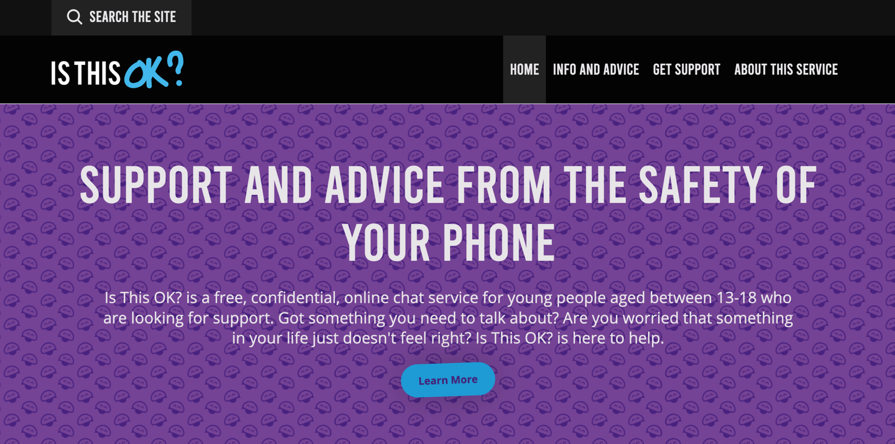Charities can be smarter and use voice, chatbots and digital assistants to help their fundraising, brand-building and audience engagement strategies.
Charities can connect better with their funders and engagers by using emerging (established?) technologies within the conversational AI space.
Voice, chatbots and digital assistants can help charities to keep closer to the money while nurturing longer-term support for their causes.
While it’s easier than ever to donate online, it’s also becoming more challenging to get your story heard — charities need to be smarter about targeting and how they communicate with prospective funders.
Here at Synthetic we’v been doing work within the charity sector as well as in healthcare and wellness— so we’d like to share some use cases we’ve come across. With a few thoughts on kickstarting your own engagement and revenue-generating activities using conversational AI, voice, chatbots and digital assistants to boot.
In the first of our series on #charityAI, we take a look at IsItOK? a web-based digital assistant from the Missing People charity.
IsItOK?
The IsItOK? campaign is a collaboration between the Charity Missing People, The NSPCC, Children In Need and Bradford/Waltham Forest districts. They are trialling a web-based chat assistant to help young people at risk of exploitation to find the right support — to have a voice, know where they can get help and have a safe place to talk to someone.

One of the aims is to use technology in the appropriate way to let teenagers know there is somewhere safe they can ask questions and get help. The chatbot is conversational and friendly, asking direct questions from the start to gather feedback.
It lets users know they are talking to an automated chatbot (this is important — in this situation, being very transparent about who/what the user is talking to could make a difference in trusting and using the bot again) and offer assurances about privacy and removing data.
The assistant starts with asking what you like to be called with free text input, before moving on to a guided navigation tree structure where users can select input buttons and find out about the service and get more information. There is also an opportunity for a live chat handover to an appropriate operator if required — though this depends on availability (it’s a charity after all)
Tonally it’s consistent across all the touchpoints — microsite, youtube videos, the chat itself and feels friendly and simple to understand- making sure the important message stands out.
Key takeouts for charities thinking about Conversational AI initiatives
- Keep an appropriate tone for the target audience — in this case, they are likely well-versed in YouTube, Instagram, TikTok etc, so it needs to feel relevant to them. Conversational style, how questions are framed, and look and feel are all important.
- Being upfront about whether the service is a bot or a human from the start answers a key question ‘Who am I talking to, can I trust them?’ make sure any live agent handover is flagged up clearly
- Don’t overcomplicate the bot. The key design principles of conversational AI should apply, the design should be invisible, helpful and relevant at all times
- Being rules-based (no NLP) is fine, as long as the conversation answers the questions is needs to. The downside is that having no NLP elements can make the bot feel more ‘artificial’ or single track — this can limit re-engagement
- Make it clear how you can get support outside of office hours, and if using NLP do homework on trigger words and phrases, You can base these on existing call centre scripts, social media listening or customer service frequently asked/requested questions and answers.
- Co-create with target service users if possible to ensure the tone and the questions being asked are relevant and useful — ultimately leading to better service and usage
- Personalisation can really help to up engagement. Sketching out user personas and matching flows to their needs is a part of this process
- Answer questions upfront about human/bot interface privacy questions
What to do next — 4 things we’d tackle
- As it’s on webchat only, all the CTAs are directed there, I’d look at extending to Facebook Messenger, SMSand possibly WhatsApp and drive users from there to the full experience.
- Having more conversational interactions could work well, it is currently a little restrictive to have just one free text input (what’s your name?) at the start perhaps remove the free text option after the brief onboarding for clarity
- It would be great to see a little more personality within the bot itself, it doesn’t necessarily need a name/persona but would have been interesting to see how it might encourage longer conversations
- Make a little clearer personalisation and conversation tree flows — between users/worried friends. Giving each a richer flow of content can help to keep users coming back for more relevant content
Obviously, it’s a great initiative, and hopefully, the trial produces useful feedback on data and usage to bring forward into other channels and engagements.
If you work for a Charity, drop us a line at hello@thesynhetic.co we have a range of cost-effective initiatives to help you win — we also run roundtables, specifically for charities looking to power their engagement and fundraising with AI.
We partner with a range of forward-thinking businesses — from global healthcare corporates and enterprise technology giants to innovative charities and edu-tech startups, on conversational AI initiatives — chatbots, voice UI, digital assistants, and emerging technologies.
Get expert campaign planning, customer experience mapping, conversation design and build and optimisation for your conversational AI initiatives.
Conversations Worth Millions.




